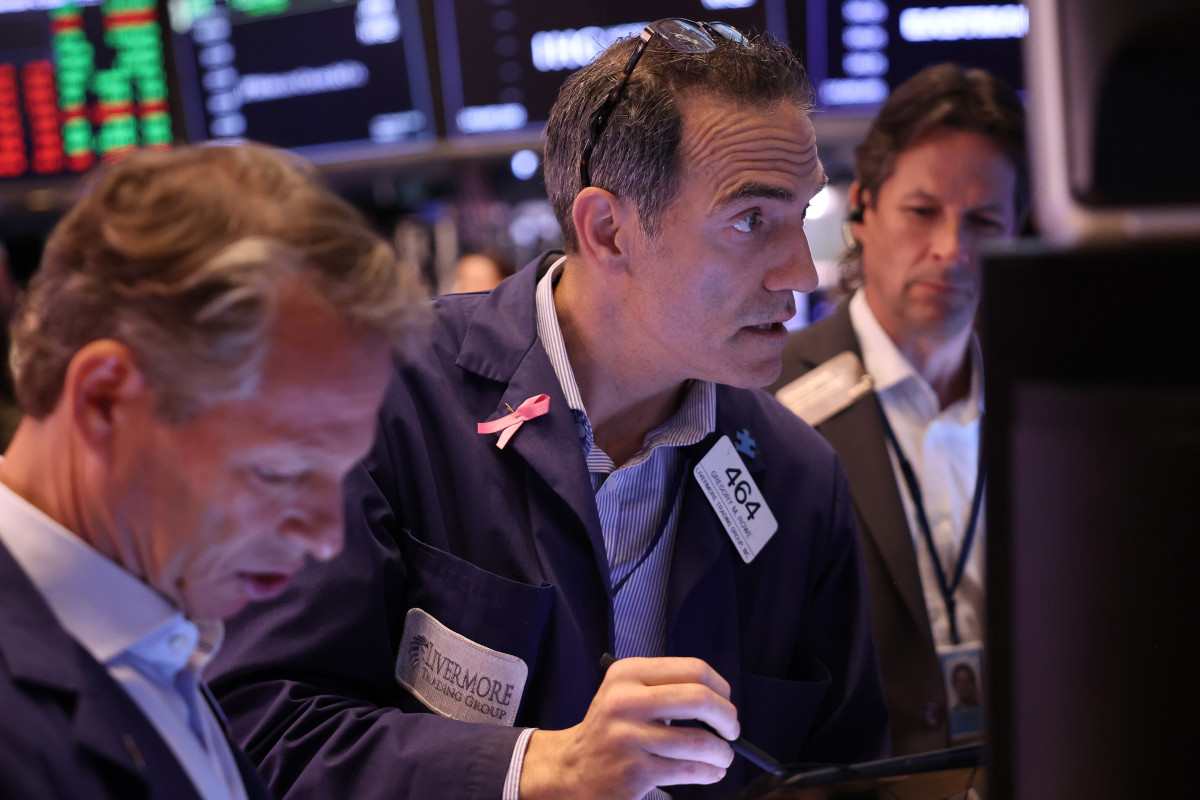
Stocks extended one of their strongest year-to-date rallies in three decades last week, with the S&P 500 notching two new record highs. Investors continue to bet that a soft landing for the world's biggest economy will support corporate earnings.
Analysts are also boosting their end-of-year targets for the benchmark, which is now within just 2.5% of a 6,000-point mark that seemed impossible to scale just a few months ago.
🐂 Sign UP Today: Free Newsletter From TheStreet - TheStreet 🐻
The long bull rally, which began more than two years ago, however, faces a key test from the bond market over the coming weeks. Investors have marked up Treasury yields in the face of resurgent inflation risks and reckless fiscal spending promises from both Presidential candidates that threaten even larger debt and deficit levels.
Benchmark 10-year paper hit the highest levels since late July in early Monday trading, changing hands at 4.138% extending a slump that has added more than 50 basis points to the most important interest rate in world financial markets.

It must be noted that that move followed an outsized 50 basis points rate cut from the Federal Reserve in mid-September, a decision that some investors are now wondering may stoke inflation pressures. The economy continues its above-trend growth, oil prices remain elevated amid geopolitical tensions in the Persian Gulf region, and the job market consistently surprises to the upside.
Stocks are expensive. Or maybe not
For the moment, however, stocks are poised to extend their longer-term run despite trading at 22 times future earnings estimates, a valuation level that is considered expensive in historical terms.
"October's stock market is bucking the historical trend with remarkably little volatility,"
"While there are plenty of reasons why stocks should be choppy, from election uncertainty to rising geopolitical tensions, the market is overlooking all of these worries as it's become clear that a soft landing is upon us," said David Laut, chief investment officer at Abound Financial in Granite Bay, California.
Related: Tesla and Boeing may rock markets this week
"We believe there is continued upside ahead for stocks, especially now that we are entering a seasonally strong period of the year for markets, with November and December historically being good months for stocks," he added.
Louis Navellier of Navellier Calculated Investing thinks the higher PE multiples are more indicative of the higher profits and margins from mega-cap tech companies. The biggest companies comprise more than a fifth of the S&P 500, resulting in "materially less systemic risk than the markets have had historically."
"This helps justify the relatively high P/E's with only mid-digit profit growth, as does the Fed cutting rates without a recession," he added. "And with still large amounts of cash on the sidelines, and likely to continue to migrate into stocks, it's difficult to say when the market will finally conclude that stocks have finally become too expensive."
The third quarter earnings season will provide a solid test to that thesis, particularly this week, as 114 companies report third-quarter updates over the next five days.
LSEG forecasts see the collective S&P 500 rising around 4% from last year to around $506.6 billion before accelerating to 11.9% growth over the year's final three months.
Megacap tech still matters to the stock market
Nearly a third of third-quarter profits, however, are likely to come from the Information Technology and Communications Services sectors, suggesting the market has yet to shake its reliance on megacap tech names.
Related: Veteran fund manager resets Nvidia stock price target after supplier update
Still, Warren Pies and Fernando Vidal of 3Fourteen Research in Sarasota, Florida, don't see stocks as overvalued at this point, even with the lofty PE multiples attached to both big tech names and the broader market.
"When you consider quality metrics, margin sustainability and the interaction between margins/multiples across different businesses, today's S&P 500 appears fairly valued," the pair said in a recent note. "If analysts are correct about forward earnings, then there is much more upside left in the current bull market."
Quincy Krosby, chief global strategist for LPL Financial, sees it slightly differently. He notes that the market has relied heavily on the AI investment theme to deliver broader market gains this year and sees stocks as 'priced to perfection' heading into the final months of the year.
"Although economic data releases have assuaged fears of a more serious cooling of the economic landscape, the market will need the heavy ammunition that only the hyperscalers underpinned by the 'insane' demand from the AI infrastructure cohort" can provide, she said.
"And the question for the market is direct: can mega tech keep spending for AI infrastructure at a dizzying pace without integrating the advanced technology at a faster pace and delivering upgrades and products that are considered necessary or 'must have,'" she added.
Election year boost for stocks?
Hyperscalers Microsoft (MSFT) , Meta Platforms META., Amazon (AMZN) and Google parent Alphabet (GOOGL) will post third-quarter earnings and capital spending updates over the next two weeks, with AI chipmaker Nvidia (NVDA) traditionally rounding out the tech earnings season in late November.
Related: Veteran fund manager delivers blunt words on stock market
Analysts at Goldman Sachs, meanwhile, noted that market performance from late October to the end of December is usually characterized by solid gains, with an average advance of around 5%.
In an election year, the bank noted, the gain is even stronger, rising to 7%.
Election risks, of course, remain elevated as former President Donald Trump and Vice President Kamala Harris remain locked in a virtual dead heat in key battleground states. The latter holds a 2-point lead in most national polls.
More Economic Analysis:
- Goldman Sachs analyst overhauls S&P 500 targets for 2024, 2025
- PCE Inflation report resets bets on another big Fed rate cut
- Why stocks are soaring and the rally has room to run
But Mark Malek, chief investment officer at Siebert, thinks the policy debate and the likelihood of either candidate's more extreme ideas making it through both houses of Congress are already backed into the market's current valuation.
That puts earnings season and near-term outlooks firmly in the driver's seat for near-term gains heading into the end of the year.
"While the next President will certainly have an impact on your wealth over the next 4 years, any increased 'risk' that comes with the upcoming election will be in the form of [market] volatility, which can be expected," he said. "Right now, the biggest risk to focus on is the well-understood, negative tail risk that always exists in the market, especially in earnings season."
Related: Veteran fund manager sees world of pain coming for stocks







